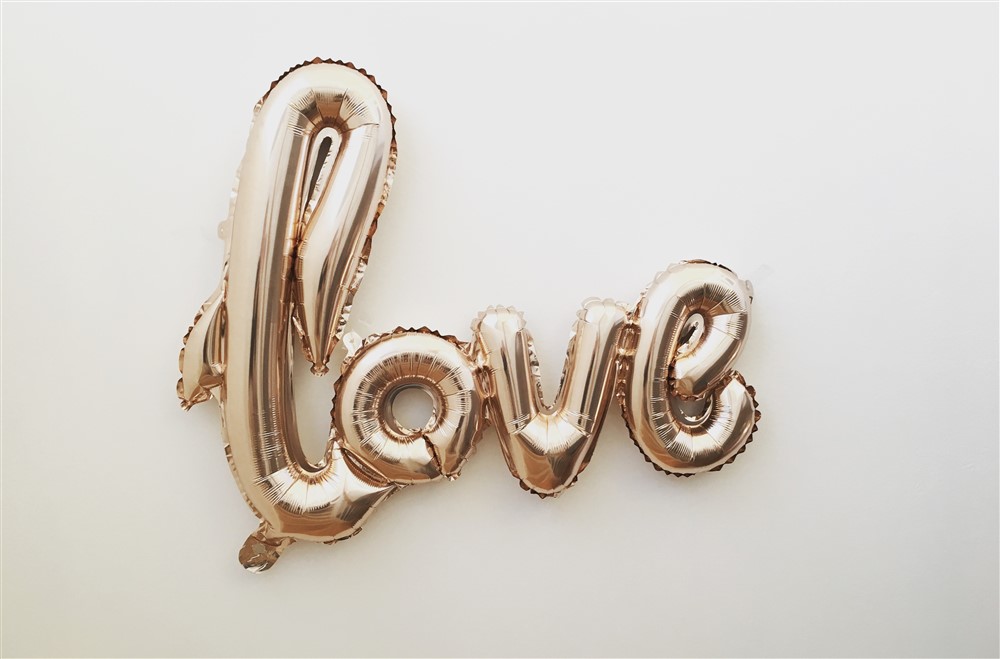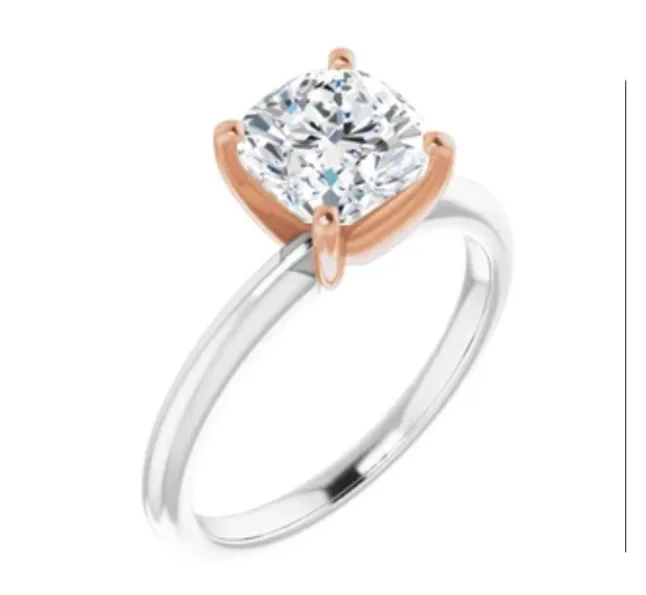Precious Metals 101 | Rare Carat
The Engagement Ring. It’s a big purchase, laden with symbolism and hope. You’ve done your due diligence on the diamond, learning about the 4 C’s - Cut, Color, Clarity and Carat Weight - and invested time in seeing how they interplay in each one. Excellent start. But now what? How will you set that glorious stone?
Diamond engagement rings are typically set in precious metals equal to the diamond in symbolic value such as gold and platinum. But what makes these metals “precious” anyway? And which one is right for you? Below, a primer to get you started.

The Gold Standard
Whether yellow, white, rose or green, gold is often the metal of choice for couples embarking on a life together. Historically, in many cultures, gold is considered a material of great value, therefore an appropriate match to symbolize an engagement, one of life’s most significant mileposts. Gold is often referred to in mythic terms: ancient Greek gods were said to dress themselves in gold; Aztec cities were said to be built of gold. Even James Bond movies play on the gold mystique - Golden Eye and The Man with the Golden Gun, to name but two - and you know James expects only the best. Surrounded by its enormous mythos, gold can be a magnificent choice for your engagement ring setting.
Gold Purity
If gold is what you seek, be prepared to make a lot of fun decisions along your journey. One decision will be about the purity of the metal used to make your mounting. “Karat” in gold refers to the proportion of pure gold mixed into an alloy comprised of 24 parts. In the US, for example, most commercial jewelers carry “14 karat” gold, a gold alloy comprised of 14 parts gold plus 10 parts other metals. This mixture yields a relatively “hard” metal, one that can withstand lots of hard knocks and whose color is pale-to-medium yellow, depending on the elements included in the mix.
Cultures outside the US, however, have their own jewelry traditions. For example, 18 karat is the standard in many European countries; 22 Karat all over India, Pakistan and Thailand.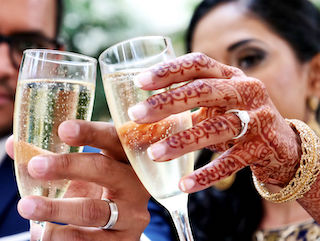
Both of these proportions of gold-to-other-metals yield richer and more lustrous yellow colors, as well as softer, more scratchable surfaces. Gold karat, as in all things, involves its tradeoffs. You should remove your high-karat gold jewelry before lifting weights or doing handwork that requires a lot of heavy pressure.
Gold Colors
- White
In addition to traditional yellow gold, various other colors of gold may be available for your special ring. White gold, a close runner-up to yellow, is another popular option. White gold is comprised of yellow gold mixed with “white metal” elements such as platinum, palladium, nickel, or zinc. White gold is often available commercially in 14 and 18 karat alloys. The material is generally light in color, but it may have greyish or pale-yellow undertones. A brighter white finish is achieved by applying rhodium plating, a process that bonds bright white rhodium to the surface of your gold ring at the molecular level. Rhodium plating seals the ring from touching the wearer’s skin directly, which can be important for someone with an allergy to nickel, an element commonly used in creating white gold, but it may need to be reapplied every few years to maintain its bright-white look.
- Rose and Green
Gold alloys that yield rose-to-pink metal as well as green are also available on the market but may be more difficult to find in a large commercial setting. Often, smaller stores can help you find the unusual treasure to celebrate your commitment.

Any of these gold options will make a stunning support for your diamond. If the stone you choose has a very high color grade such as a G or E, make sure the ring you choose has been rhodium-plated inside the “head,” that part of the design that actually holds the stone. The extra white material under the stone will help it sparkle more brightly against yellow, rose or green gold, heightening contrast between diamond and setting.
Finally, whatever karat or color you choose, make sure you see the karat mark denoting the material composition stamped inside the ring’s shank. This will come in handy if ever you need the ring to be sized.
All that Glitters… the Platinum Option
Unlike gold, known and used by world cultures for centuries, platinum has only recently become popular for use in wedding jewelry. That’s lucky for us, as platinum can be a terrific choice to symbolize your commitment.
Although discovered in ancient Egyptian funerary art dating back to 700 BCE and seen in some pre-Colombian societies, platinum does not figure significantly in the art or economics of many cultures until more recent centuries. Platinum was discovered by Spanish Conquistadors in the 16th century during their conquest of the Americas. It was cast aside, however, considered a distraction from their true quest - silver. As proof, consider the name “platinum,” a variant of the Spanish platina. Meaning “little silver,” the name indicates clearly how insignificant these explorers regarded the platinum deposits upon which they stumbled.
It wasn’t until the late 1700s that scientists developed the processes to successfully extract platinum from its cozy ore nest. Current extraction processes remain quite labor-intensive, requiring multiple physical and chemical steps. Ten tons of platinum ore produce only a single troy ounce of pure material. This rarity gave the element an easy entrée into circles of the wealthy and privileged who first embraced its use in jewelry, which is how platinum became associated with extreme luxury today.
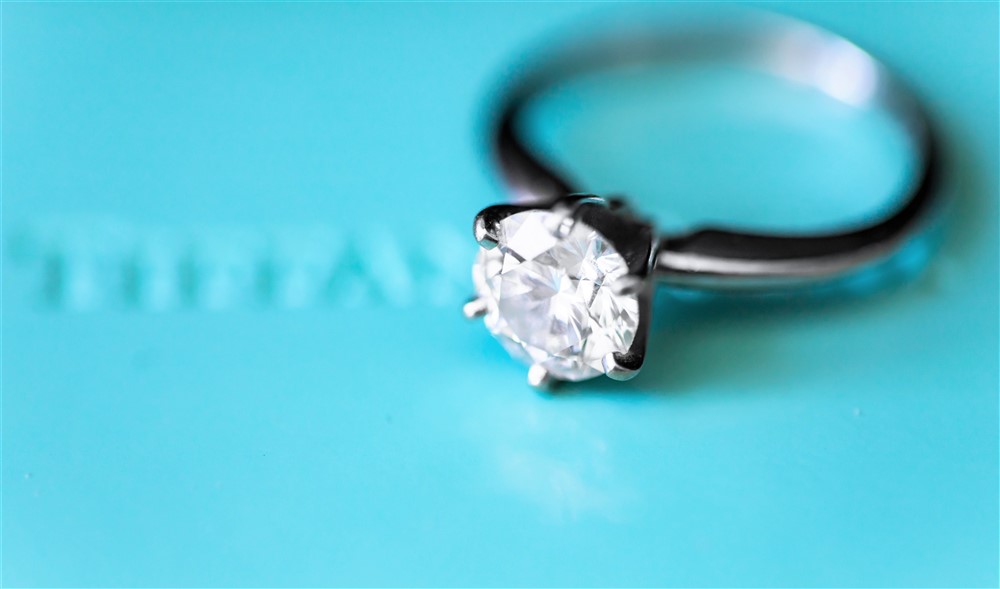
While platinum mining has been increasing slowly due to market demand, annual production equals a mere 10% of worldwide annual gold output. Platinum is currently mined in Russia and Canada, but its most productive vein is located in South Africa, uncovered about 125 years ago. The Bushveld Igneous Complex, Earth’s cornucopia of elemental deposits, proved to be rich in platinum and platinum-related metals.
Non-corrosive and a good conductor of electricity, platinum has found wide use in industrial and medical applications, increasing its value. For the car buffs out there, platinum is a critical element used inside catalytic converters where its properties as a catalyst in chemical reactions reduce dangerous carbon emissions from car exhaust.
A dense metal, a platinum ring provides a comfortable heft to its wearer. A platinum ring weighs about 30% more than a gold ring of comparable size. Platinum itself is considered a very stable element not prone to tarnishing over time. Perhaps most interesting to those shopping for an engagement ring, platinum is non-toxic, so will not cause adverse skin reactions in those with a history of sensitivity.
There are many reasons for you to choose platinum for your engagement ring setting. First - it’s a beautiful material. Its natural grey-silver color is unique and shows off diamonds and other gemstones like nothing else. You can also choose to purchase your platinum jewelry with a rhodium plating, just as you would white gold, for a brighter white finish.

Platinum is a strong material but, given its relative softness (4.5 to 5 on the Mohs hardness scale), expect it to develop a glowing patina over time, rather than maintain a mirror-like finish. This satiny surface is a perfect foil for the glittering facets of your diamond. On the downside, like high-karat gold, platinum’s malleability should be taken into consideration. It too, can bend when too much pressure is applied.
Platinum is also an appropriate choice because of its rarity - there is just less of it to go around. This gives it value you won’t find in anything else, which may also reflect positively on your romantic commitment. Platinum’s rarity in combination with its industrial uses give it solid potential in terms of investment value as well. Historically, platinum prices are based less on emotion than those for gold, traditionally an investor’s comfort commodity in an uncertain economy. Market forces of supply and demand act more concretely on platinum, and as of this writing, many economists consider platinum dramatically undervalued. Continued industrial uses are likely to cause a rise in platinum prices in the future. Given its essential beauty, limited supply, and wide industrial uses, purchasing wedding jewelry can be considered a safe bet in terms of investment value.
Another great reason to use platinum for your wedding jewelry is for a twist on tradition. While previous generations may have opted for yellow gold rings, a new generation wants to make its own wedding statement. Platinum jewelry certainly fits that bill. Consider also, that today’s couples’ grandparents or great-grandparents may have chosen platinum for their wedding jewelry before World War II, when governments began imposing limits on its use. Choosing platinum today makes your own statement while also tying you to family traditions.
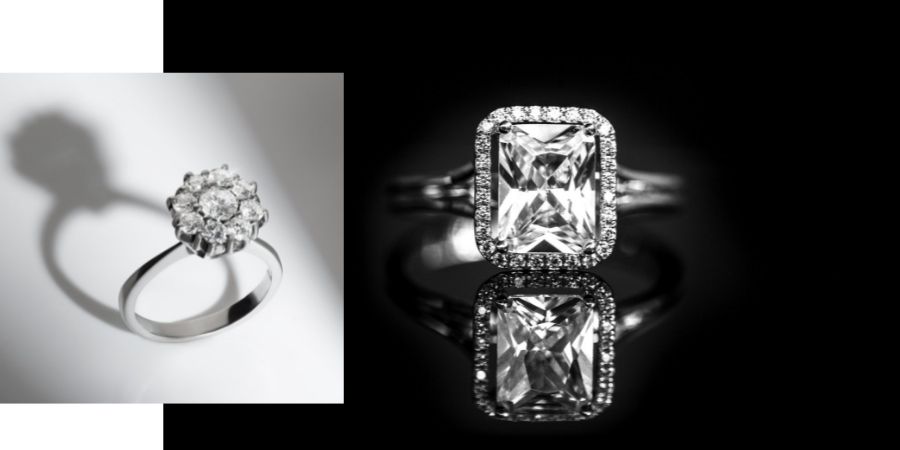
Platinum rings should also carry a maker’s mark stamped inside the shank. You should be able to read some combination of the letters of the word Platinum - PLAT, PT, or perhaps the entire word - along with numbers such as 850, 900 or 950. These indicate the proportion of platinum to other elements in the alloy, just as karat works in gold. Instead of using a total of 24 parts, however, platinum alloys use 1000 parts. (The mark “.925,” however, is NOT a platinum designation. This is reserved for Sterling Silver only.) Sometimes, you may see Plat/Cobalt signifying a very hard alloy of platinum. And finally, the stamp “IRID,” signifying platinum alloyed with the element iridium, which is a common designation in today’s market.
The Choice Is Yours
In the end, you can’t go wrong choosing gold or platinum for your engagement ring. Whether traditional yellow or unusual white, rose or green, gold remains a standard of quality, valued by cultures the world over for millennia. Platinum, somewhat newer to the market, is highly prized in its own right due to its cool beauty and limited availability. Both materials provide strength, durability, and beautiful settings to support your perfect diamond.
